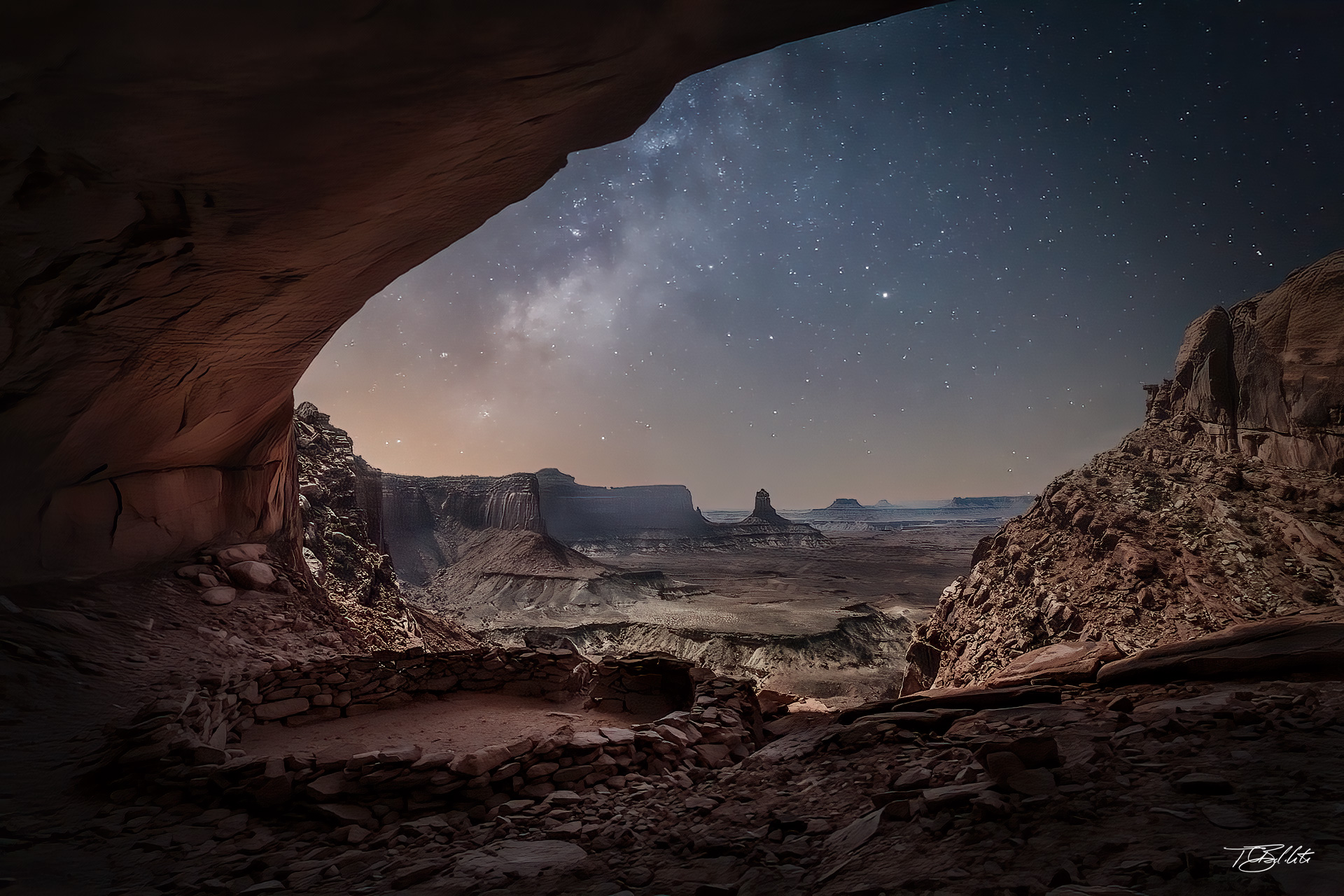False Kiva in Canyonlands National Park radiates a deep sense of spiritual energy, rooted in its location, history, and natural surroundings. Set in a secluded alcove within a rugged landscape, the circular stone structure evokes a connection to ancient peoples, believed to have used it for gatherings or rituals. The round shape of the Kiva, traditionally linked to unity and the cycles of nature, further amplifies the feeling of timelessness and sacredness.
Standing within the Kiva, one is enveloped by the silence of the desert and the grandness of the canyon, creating a meditative space that feels suspended between the earth and sky. The night sky, especially, adds to the mystical ambiance—its vastness seems to invite introspection and wonder about the universe and our place in it. The stars and the Milky Way, visible in the absence of light pollution, heighten the sensation of connection to something larger, as if the heavens are aligning with the ancient ground below.
This site seems to hum with the collective energy of past and present, as if it holds within its stones the prayers, hopes, and ceremonies of those who once gathered there. Whether for personal reflection, communion with nature, or spiritual exploration, False Kiva offers a unique environment where one can feel an almost palpable presence of the sacred, transcending time and space.
This photo captures the mystical atmosphere of False Kiva in Canyonlands National Park, highlighted by the night sky. Taken from within the stone-walled Kiva, the circular rock formation sits prominently in the foreground, encircling a gathering area. Beyond the Kiva’s threshold, a breathtaking view of the rugged canyonlands stretches out, with cliffs and mesas forming dramatic silhouettes. The night sky dazzles with a blanket of stars, including the vibrant Milky Way, arcing across the scene. The contrast between the ancient, earthy Kiva and the infinite celestial display creates a sense of timeless wonder and serenity.
False Kiva is a Class II Cultural Resource Site due to its fragile area and vulnerability to visitor impact. The location was not posted on any maps, websites or apps. Unfortunately, the site was closed by Canyonlands National Park rangers in early August 2018, as a result of vandalism.




